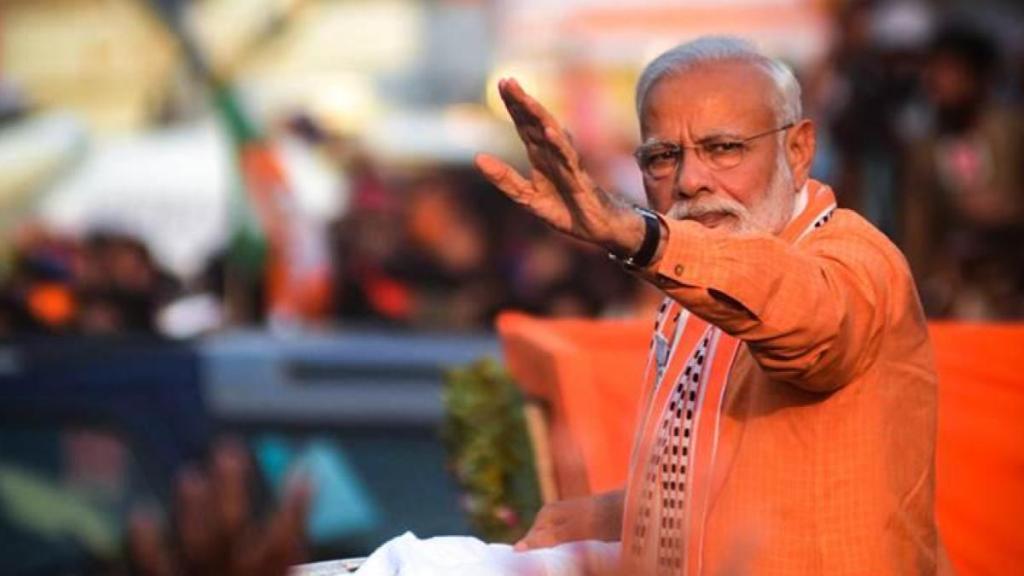By Ashok Gulati and Ritika Juneja
As India gears up for parliamentary elections in April-May 2024, Prime Minister Narendra Modi’s major development plan is ‘Viksit Bharat Sankalp by 2047’ (developed India by 2047). He has also carefully crafted a new caste system comprising the poor, farmers, women, and youth. While the opposition parties are stuck with caste census promises, PM Modi is riding on the promise of Ram Rajya, an inclusive and sustainable growth model. More confident than ever, PM Modi has set a goal of winning even a larger number of seats in this election than the last one. His confidence stems from the performance of his government over the last 10 years, and the vision that he has for Viksit Bharat by 2047.
There is no doubt that the Modi government has done quite well in the post-Covid period. The Economic Review by the department of economic affairs points out that for three years in a row (FY22-FY24), India has registered more than 7% growth in GDP. This is much higher than the global average as well as that of most G20 countries. But, for inclusive growth, we need to dive a little deeper and see what has happened in the agriculture sector, which engages the largest segment of the working population (45.8% in 2022-23, per PLFS). In this context, let us compare the 10 years of the Modi government with 10 years of the UPA government on certain key parameters.
On the macroeconomic front, India’s real GDP grew by 5.9% per annum between FY15 and FY24 vis-à-vis 6.8% during FY05-FY14. On CPI inflation, the Modi government wins hands down with 5.1% versus 8.1% during the UPA period. Multidimensional poverty fell from 29.2% in FY14 to 11.3% in FY23, per Niti Aayog. Further, the Economic Review states that unemployment rate has declined drastically from 6% in FY18 to 3.2% in FY23 (PLFS, MoSPI), although ILO data still shows unemployment at more than 7%. The two differ due to differences in definition. The agri sector, contributing about 18% of India’s GVA in FY24, is likely to register a growth rate of just 1.8% in FY24, as per first advance estimates—a major drop from 4% in FY23. If we count this, the decadal growth in agri-GDP under the Modi government is likely to be roughly the same (3.5%) as under the UPA government. It reminds us of the proverbial Hindu rate of growth of 3.5% for 20 years!
The reverse migration during Covid-19 has increased the share of agriculture in the labour force, up from 42.5% in 2018-19 to 45.8% in 2022-23 (PLFS data), which is not a good sign. It is no wonder that during the Modi 2.0 period, real wages in farming as well as in non-farm rural operations have marginally come down. This raises questions about efficacy of the inclusive growth model and the promise of doubling farmers’ real incomes by FY23.
The big question is what the strategy should be for Amrit Kaal to achieve inclusive and environmentally sustainable growth. The short answer is reorienting doles/subsidies towards sustainable development expenditure and fiscal consolidation. In the interim Union budget for FY25, the finance minister has provisioned an expenditure of `47.6 trillion, and aims at bringing down fiscal deficit from 5.8% of GDP in FY24 (RE) to 5.1% of GDP in FY24. This is a good move, although the FRBM Act asks for fiscal deficit to be 3% of GDP—there is still a long way to go for achieving optimal fiscal consolidation.
Within the agri-food-rural space, the government has pruned the fertiliser subsidy to `1.64 trillion for FY25 against RE of `1.88 trillion (FY24). Other three major welfare subsidies/doles are the food subsidy of `2.05 trillion, MGNREGA at `86,000 crore, and PM-Kisan at `60,000 crore. All these subsidies need major rationalisation and targeting with a view to divert more resources towards development expenditures and environmental sustainability, including agri-R&D, micro-irrigation, rural roads, agri-marketing infrastructure, and investments in building efficient value chains for high-value perishable commodities. India also needs to tackle the humongous problem of child malnutrition. It is time to change gears from just food security to nutritional security and having agriculture that is not only resilient to climate change but also protects the soil, water, air, and biodiversity. These goals can’t be achieved with the business-as-usual scenario.
Within agriculture, the interim budget of FY25 provisions a 27% increase in the allocation for the department of fisheries, animal husbandry, and dairying—`7,100 crore, up from `5,615 crore in FY24 (RE). This is certainly a good step as fisheries and animal husbandry have been growing the fastest within the agri sector and were not getting their due in relation to their contribution to agri-GDP.
However, one observes a massive jump of 70% in PM Awas Yojana (Gramin) from `32,000 crore (RE) in FY24 to `54,500 crore (BE) in FY25. But this increased figure is actually the same as what was budgeted in FY24 which could not be utilised. It is also interesting to note that more than 70% of houses under the scheme have been allotted to women as sole or joint owners. This not only ensures permanent asset creation for rural households but also provides dignity of life while creating more jobs in rural India. This is a commendable step and the finance minister deserves compliments for this. In fact, it would be even more innovative if the MGNREGA programme in rural areas is dovetailed with the PM Awas Yojana so that the dream of every household having a reasonably good shelter is realised as soon as possible. That will be the real beginning of Ram Rajya in rural areas, and will also reward BJP with ample votes in the coming elections.
Authors Ashok Gulati and Ritika Juneja are distinguished professor and fellow, ICRIER, respectively. Views are personal.


